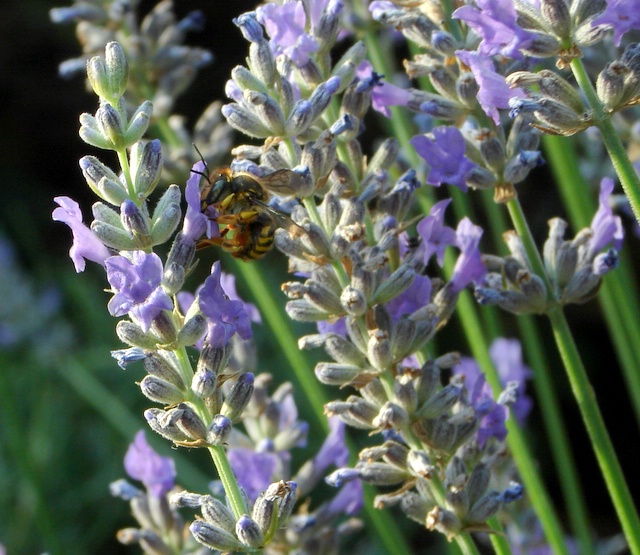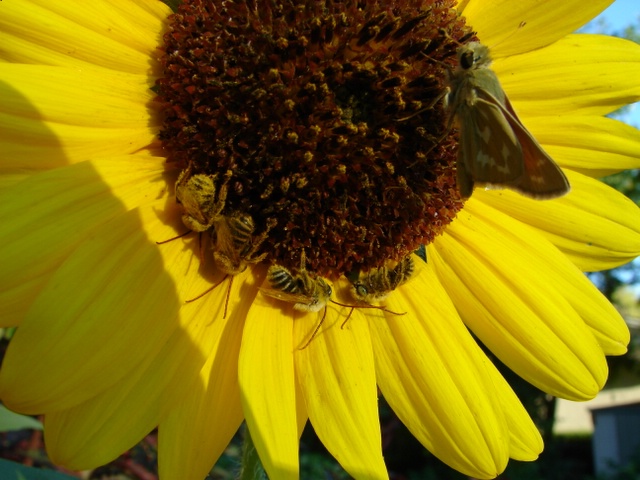Audio: mp3 

of a carder bee
Courtesy & Copyright Jim Cane
Do you grow the ornamental plants called “lamb’s ears” or rose campion in your flower gardens? These plants produce dense mats of buttery soft woolly leaves. That leaf fuzz is avidly sought by so-called “carder bees” of the genus Anthidium. In textiles, carding is the mechanical process of combing through the fibers of cotton or wool to align them before spinning. The female carder bee has multi-toothed mandibles that she uses to shave the leaf hairs, gathering the fluff into a ball to bring back to her nest.

Courtesy & Copyright Jim Cane
Carder bees nest solitarily in aboveground cavities, typically an old beetle burrow in deadwood. Each female lines her tunnel with the carded plant hairs. Onto this fluffy pillow she assembles a provision of pollen mixed with nectar, which constitutes the food mass soon to be eaten by her progeny, one provision per larva.
Carder bees are stout, round, relatively hairless bees marked in black and yellow. We have several species, the largest being a European escapee that is associated with lamb’s ears. The female’s nesting biology is distinctive enough, but it is the male’s behavior that you will notice first.

Courtesy & Copyright Jim Cane
Male carder bees are aggressive, territorial suitors. They spend all day in flight, tirelessly patrolling lamb’s ears and garden flowers, particularly culinary sage and Russian sage. Males dart at all carder bees of either gender, as well as other like-sized bees. They pounce upon and wrestle these unsuspecting individuals to the ground. If it is a female of their species, they will endeavor to mate with her. Such is the brazen courtship of male carder bees. Look now for these wool gathering bees in your gardens before summer bids us farewell.
This is Linda Kervin for Bridgerland Audubon Society.
Credits:
Photos: Courtesy & Copyright Jim Cane
Text: Jim Cane, Bridgerland Audubon Society
Additional Reading:
Anthidium_manicatum, BugGuide, BugGuide.net, https://bugguide.net/node/view/7744
Anthidium_manicatum, Discover Life, Polistes Foundation, https://www.discoverlife.org/mp/20q?search=Anthidium+manicatum
Wool Carder Bee (Anthidium manicatum), Solitarybee.com, Paul Betts, (March 2018, website no longer functioning)





